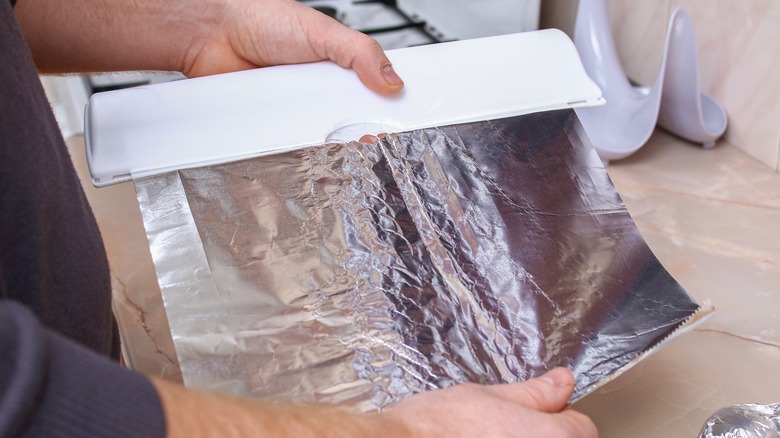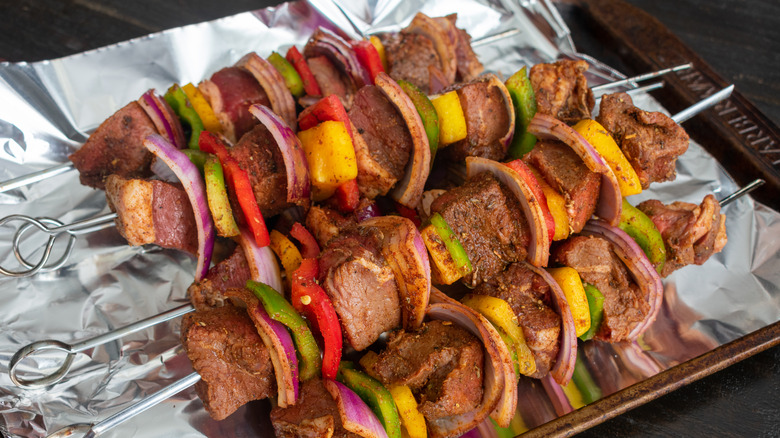Why You Should Stop Lining Your Oven With Aluminum Foil
Aluminum foil is more than just a modern-day kitchen staple – it inhabits many phases of preparing, cooking, serving, and storing our food. Foil comes in easy-to-use rolls, remains relatively affordable, and is sturdy enough for leak-free cold storage and high-heat cooking. The issue is whether it's actually safe for use inside your oven and why you might need to bypass some traditional foil-based habits.
Healthline addresses the inherent qualities of aluminum foil, stating that it's generally safe for cooking despite evidence that it can leach into food when cooking at high temperatures. However, the human body absorbs only minute amounts of aluminum, and healthy people easily excrete it. In fact, aluminum occurs naturally in many foods and exists in the air we breathe and the water we drink.
The caution about aluminum foil in your oven is less about health and more about its versatility in everyday cooking — particularly the practice of lining the bottom and interior racks of your oven.
Melting foil and blocked air vents
You'd be hard-pressed to find a kitchen without a roll of aluminum foil, typically tucked into a center-stage drawer for quick grabbing. Inside the oven, it keeps meats from drying out, protects delicate foods such as vegetables, and creates steamy flavor when creased into a foil packet, explains Southern Kitchen. But one thing to avoid is using those thin shiny sheets of aluminum to line your oven. It's a tempting tactic for easy cleanup of spills and drips, but you're creating hidden hazards with potentially big consequences.
Industry experts such as Whirlpool agree that lining an oven with foil can damage its enamel surface, causing chips, scratches, and worse. High heat temperatures can melt the foil as it touches hot surfaces, affecting the performance and functionality of crucial heating elements. If sheets of foil block air vents, the uneven heat distribution affects the outcome of your cooked foods. That applies when lining oven racks as well, as noted in a Whirlpool demonstration video. The metallic foil underneath also tends to reflect heat upwards, potentially overcooking or burning the bottoms of your baked goods, casseroles, or meats.
Warners' Stellian explains that original cooking foils used tin instead of aluminum, which has a higher heat tolerance and is less prone to melting. An alternative way to keep your oven clean is to place a baking sheet on the rack beneath your vessel. It's much easier to clean than a seared mess on the oven floor.

